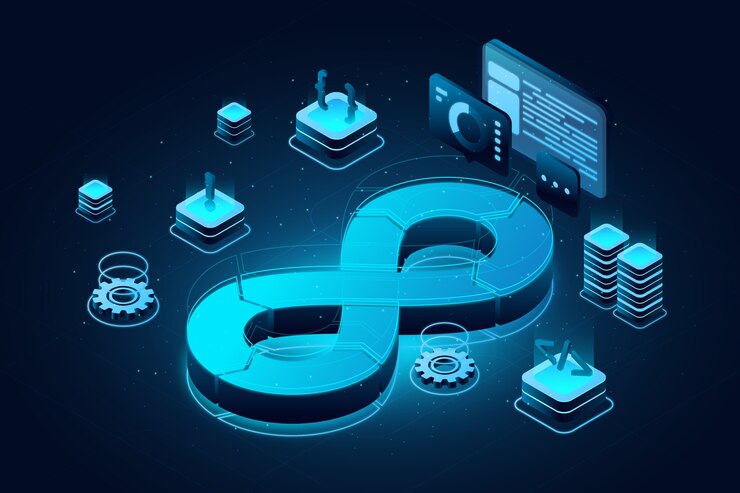The Importance of Internal & External Linking in SEO: Internal and external linking properly connects web pages such that they can be well-linked professionals use it as a good advertisement tactic. Internal links guide users within a site, while external links connect to trusted sources. Both help search engines understand and rank your content.
Think of internal links as roads and external links as bridges, making navigation smooth. Without them, users get lost, and search engines struggle to rank your site. A well-linked website improves both user experience and SEO.
Balancing internal and external links boosts site authority and engagement. Internal links keep visitors exploring, while external links add credibility. A smart linking strategy leads to better rankings.
Internal Linking

When two pages in a website are linked to each other by the use of hyperlinks, the process is of internal linking. When generated, these links must help user navigation as well as search engine knowledge of the structure of the website. A properly crafted internal linking policy enhances the site structure from the perspective of search engines, in turn making it simpler to crawl and index a site’s content.
Read Also https://learnonline.click/content-writing-mistakes-that-can-harm-your-websites-seo/
SEO Benefits of Internal Linking
Internal linking improves the SEO of website pages because search engines crawl and index them easily. Therefore, such a paper might have some relevance to heuristics. It also assists in the distribution of page rank across several pages thus ensuring that they rank highly in the search results. In addition, a robust internal linking strategy encourages user engagement through navigation to relevant content, reduces bounce rate, and increases time spent on-site, which are all key factors for better rankings.
External Linking

The Importance of Internal & External Linking in SEO: In simple terms, the practice of merging hyperlinks on a webpage led by various URLs related to pages on other websites depicts external linking. This is to bind your content to authoritative and relevant resources, which amplifies the chances of redirecting the user to detailed extra information. Also, internet search engines use external links to discern content relevance and merit.
SEO Benefits of External Linking
When you externally link your content, it shows search engines that your content is well-researched and backed by quality sources, which in turn can boost its rank on search engines. Adding backlinks from solid and authoritative sites to your website can increase the credibility and trustworthiness of your website. Strategic outbound links can also snowball into the creation of relationships with other websites, thereby increasing the chances of earning potential backlinks, thus further strengthening your SEO.
Balance Between Internal & External Links
The Importance of Internal & External Linking in SEO: It is essential for you to internally and externally link your posts so that search engine searchers can find you. Internal backlinks are extremely helpful for us, but having too many may prevent a user from finding his way through our wonderful site. External links may do even more harm. A smart mixture always has your site visitors stick around. In addition, an intelligent combination is also good for search engine rankings.
Internal links improve navigation, while external links add credibility. Using both wisely enhances user experience and boosts SEO. Two is the basic principle, to have the aesthetic quality and change Factor be compromised.
Common Mistakes to Avoid
This is a situation when too many internal links are crammed into a page from various websites, and it confuses most if not all, users. At the same time, it degrades SEO. A common problem is that of orphan pages – pages with no internal links. Because of this feature, it is difficult for search engines to find them.
For external links, linking to low-quality or irrelevant sites can harm your website’s credibility. Using only do-follow links without a proper strategy may pass too much link authority to other sites. It is equally essential that checking for dead links is a regular activity as it adds up to the bad image of the user experience as well as causes harm to SEO.
FAQ’s
Why is internal linking important for SEO?
Internal linking enables search engines to crawl and index pages and aids user journey improvement.
How do external links impact SEO?
External links add credibility by connecting to authoritative sources, boosting trust and rankings.
How many internal and external links should a page have?
There are no particular boundaries, but links are best used when they are relevant and natural and do not take over from content.
Should external links be do-follow or no-follow?
A mix of both is ideal do-follow passes authority, while no-follow controls link equity distribution.
Conclusion
Internal and external linking influence SEO, user experience, and search rankings crucially. Links inside sites help connect pages, enabling easy navigation and spreading the link juice.
External links add credibility by linking to trusted sources, enhancing content value. A successful internal and external linking approach to help increase visibility and engagement. Websites can reach greater heights by simply avoiding some elementary mistakes while smartly utilizing links to enhance their authority and thereby improve their search rank. Strong linking practices are responsible for a more user-friendly and SEO-optimized site.


